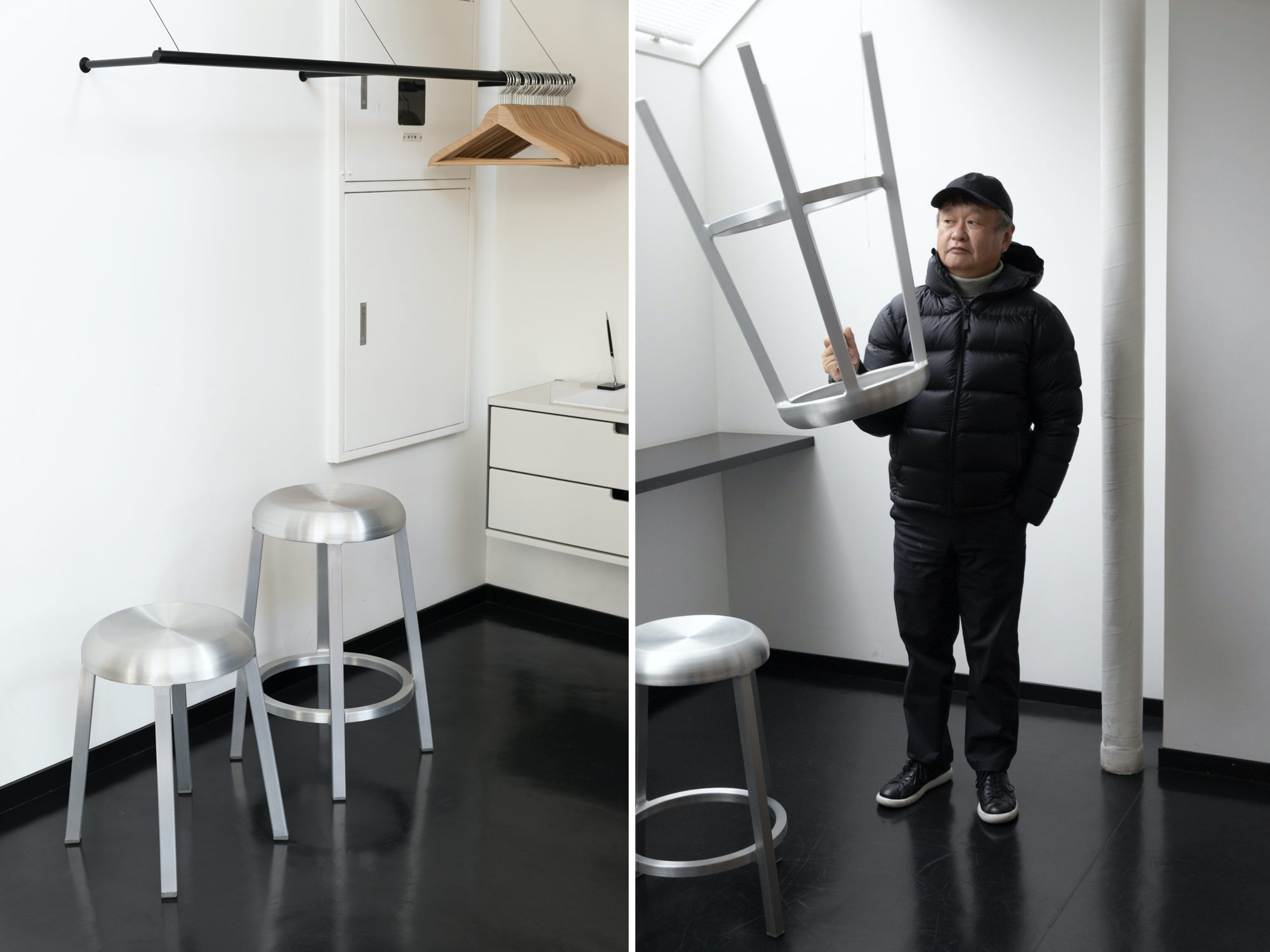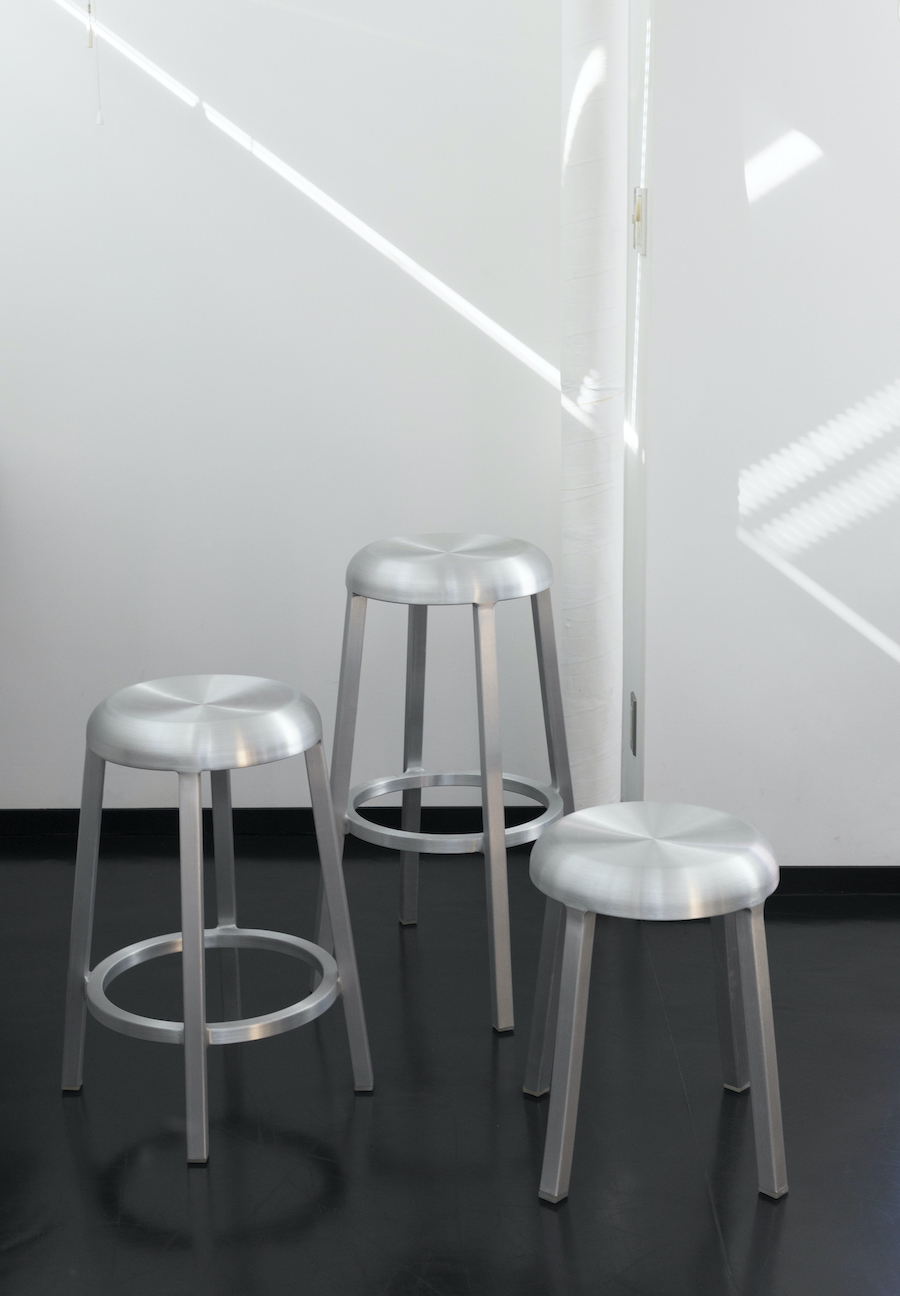It’s no coincidence that modern design history is told by chairs rather than cars, typefaces, or home appliances. So many extraordinary chairs were borne from innovative use of materials, a microcosm of objets d’art that take us through a series of key technological episodes in the evolution of design. This is true for the Emeco 1006, also known as the Navy chair, a seat originally conceived for maritime warships. Since 1944, Emeco has been democratizing furniture by investing in recycled material and handmade processes that have yielded virtually indestructible chairs able to withstand sea air and torpedo blasts.
Four generations later, Naoto Fukasawa is putting those lessons to good use. The lauded Japanese designer recently debuted Za, an aluminum stool marked by its elegant, bird-like profile. Fukasawa’s interpretation subliminally invites sitting with its materiality and form, prompting “centered” seating. While a stool’s central purpose is utility, it has served a higher purpose throughout history— it is a beautiful design object in its own right. After endless centuries of carving, turning, and joining, the Thonet family transported furniture into a fully industrial process, bending wood with steam in the 19th century, and thus coining the sister to the infamous cafe chair, the 1880 barstool. After bentwood, furniture makers experimented with other materials like tubular steel (a la the Marcel Breuer Bauhaus stool), a huge range of synthetic plastic and glass (think of the Eames molded plastic stool), and eventually machine-shaped aluminum (e.g. Sottsass’s stool for Emeco). In this sense, the stool is a striking reflection of shifts in technology, production methodology, and aesthetics. Emeco’s Za is just the latest example of the humble seat’s limitless potential.
Below, Fukasawa tells us the keys to making a great chair, how unconscious behavior inspires his designs, and the pandemic’s impact on his creativity.


